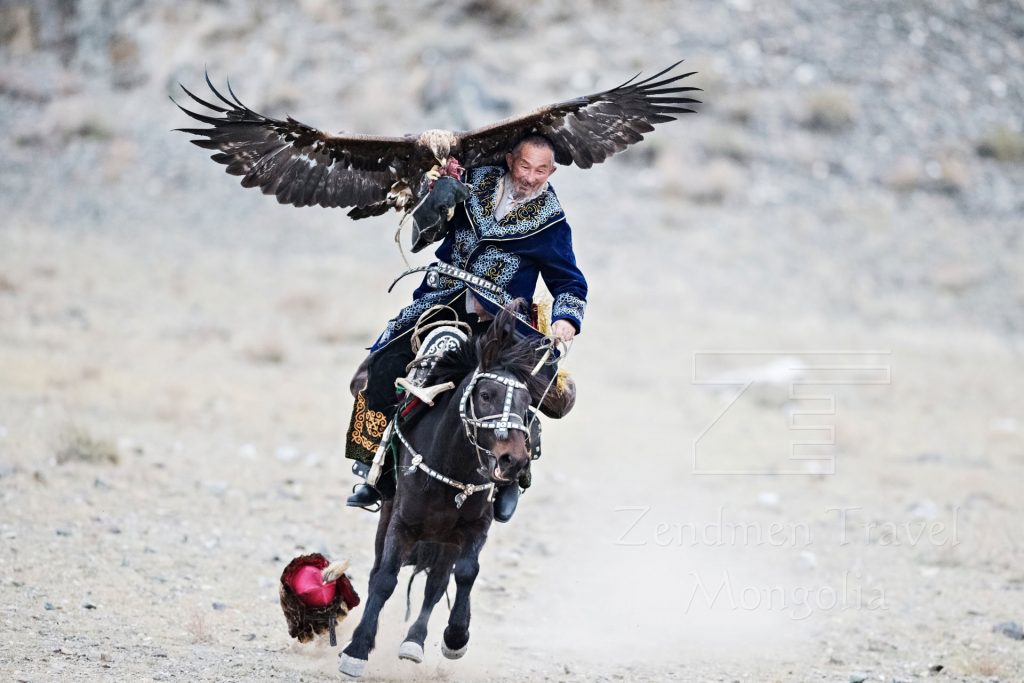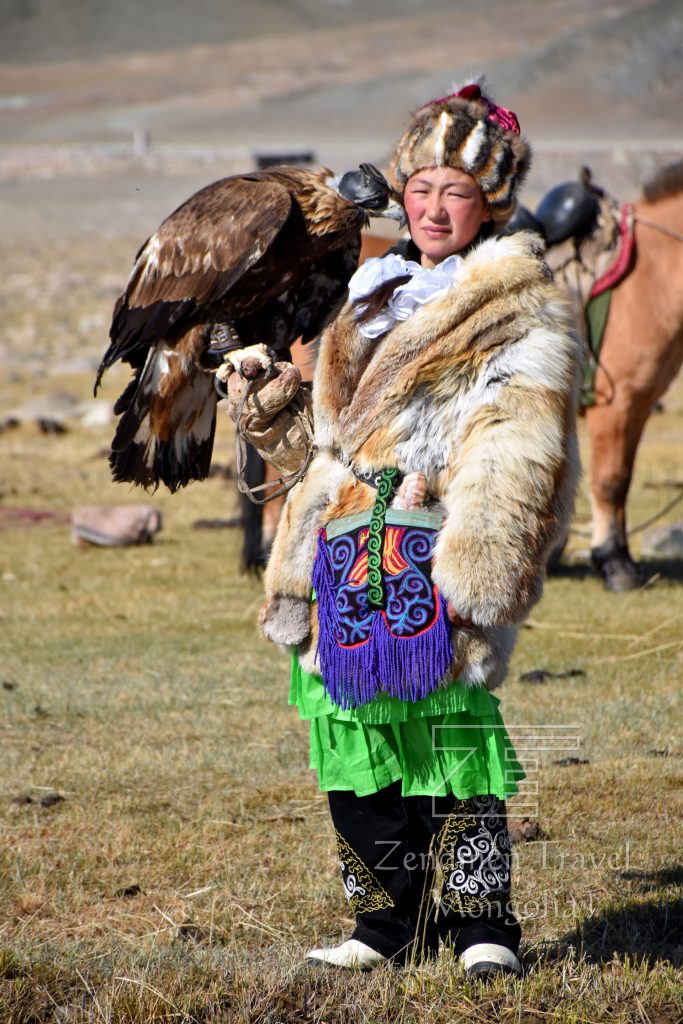Eagle Hunters and Huntress
Hunting with raptors is very much an ancient tradition of the Central Asian nomadic tribes. The earliest mentions in the historic resources, Secret History of the Mongols reveals Bodonchar Munkhag, a direct ancestor of Chinggis Khaan, was abandoned by his tribe and caught a goshawk for hunting to survive from starvation. Also, Marco Polo noted in his travelogue that Kublai Khan had hunter eagles and gyrfalcons. His well-trained eagles were able to catch Red Deer, Grey wolf, Gazelles, and Foxes.
Nowadays, this old tradition is being kept alive among the Kazakhs who settled in Mongolia since the 20th century. Finding peace in the western part of Mongolia, Kazakhs were able to preserve this ancient tradition in the valleys of the towering Altai Mountains.

Hunting foxes for their fur was one of the recourses of income for eagle trainers during the communist era. After the democratic revolution in 1990, eagle trainers had no restrictions and as the number of eagle trainers increased, they were able to arrange a contest so-called Eagle Festival. Today, Kazakhs organize several eagle festivals throughout the year to test both man and the eagle. The biggest one is the “Golden Eagle Festival”. which is held in Bayan-Ulgii province during the first weekend of October. The Golden Eagle Festival marks the opening of hunting season.

Eagle hunters and huntress
As the tradition passed down from fathers to sons. Among men, hunting with an eagle was often practiced. Ironically, a passionate 13-year-old girl broke the rule and trained her very own eagle under her father’s sight. Hunter’s society accepted her as she faced numerous challenges. The story of a brave young girl drew international filmmakers’ attention. The Eagle Huntress movie, made by Asholpan’s remarkable story, shows 13 years old Kazakh girl’s voice for gender equality. Eventually, she was the first of many young girls who found a passion for practicing this manly tradition. Some of them even beat seasoned eagle hunters in the eagle hunter’s contests.

If you wish to see the Kazakh tribe and eagle hunters, here is our recommended tour.






